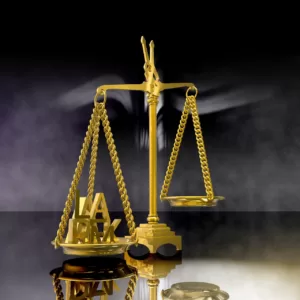INTRODUCTION:
Modern environmental law has its roots in the Common Law principles of nuisance. The substantive law for the protection of the citizen’s environment is basically that of Common Law relating to nuisance. In fact, the remedies under the law of tort to abate environmental pollution are the oldest legal remedies.
MEANING OF COMMON LAW REMEDIES
The term “Common Law” is derived from Latin words Lex Communis.
It is a body of customary law of England, which is based upon judicial decisions. Common Law continues to be in force in India under Article 372 of the Constitution in so far it is not altered, modified or repealed by statutory laws. Common Law remedies against the environmental pollution are available under the law of Torts. Tort is a civil wrong other than breach of trust or contract. For any tortious action, which results in damage to property, person or reputation of another person, the affected party can claim damages, compensation or injunction or both.
The Supreme Court in the case of M.C. Mehta v. Kamal Nath,’ rightly observed that environmental pollution amounts to civil wrong and by its nature it is a tort committed against the whole community. The Court observed:
Pollution is a civil wrong. By its very nature, it is a tort committed against the community as a whole. A person, therefore, who is guilty of causing pollution, has to pay damages (compensation) for restoration of the environment and ecology. He has also to pay damages to those who have suffered loss un account of the act of the offender…. In addition to damages…the person guilty of causing pollution can also be held liable to pay exemplary damages, so that it may act as a deterrent for others not to cause pollution in any manner.
The liability of the polluter under the law of tort is one of the major and oldest legal remedies to abate the pollution. The most important tortious liabilities for environmental pollution are under the following heads:

- Nuisance
Nuisance means anything which annoys, hurts or that which is offensive.
It may be in the form of obnoxious smells, noise, fumes, air or water pollution due to the effluents discharge or it may be any kind of obstruction which interferes with the right of person to which he is otherwise entitled for exclusive use. Under Common Law Principle, nuisance is concerned with unlawful interference with the person’s right over wholesomeness of land or of some right over or in connection with it.
Nuisance can be further divided into two categories. These are:
- Private nuisance: Private nuisance can be defined as an unreasonable interference with person’s right over wholesomeness of land due to emission of dust, offensive smell, fumes or noise, air or water and effluents.
- Public nuisance: Whereas, public nuisance can be defined as an unreasonable interference with the general right of public by above mentioned methods. However, the primary difference between private and public nuisance lies in the remedies sought. Public nuisance is both a tort and a crime.
In case of Ram Baj Singh v. Babu Lal,’ a person built a brick grinding machine in front of the consulting chamber of a medical practitioner. The machine was generating a lot of dust and noise which polluted the atmosphere and entered the consulting chamber of the medical practitioner and caused physical inconvenience to him and his patients. The Allahabad High Court held that this amounts to private nuisance which can reasonably be said to cause injury, discomfort or annoyance to a person.
CASE LAWS
In Ram Lal v. Mustafabad Oil and Cotton Ginning Factory,’ the Punjab and Haryana High Court rightly observed as follows:
Once a noise is considered to be a nuisance of the requisite degree it is no defence to contend that it was in consequence of a lawful business or arose from lawful amusements or from places of religious worship.
In V. Lakshmipathy v. State 1992, petitioners were aggrieved by the location and operation of industries and industrial enterprises in a residential area in alleged gross violation of the provisions of the Karnataka Town and Country Planning Act, 1961. The petitioners were questioning the industrial activity in a residential locality by establishing and running factories, workshops, factory sheds, manufacture of greases and lubricating oils by distillation process and also the production of inflammable products by the respondents. The Karnataka High Court directed such industries to be stopped and further held that earmarked residential area should not be used for such industries. The Court also directed authorities to remove all encroachments in public lands and roads in the area in question and to implement order of the Court within sixty days from the date of receipt of copy of order. The petitioners were also held entitled to costs of Rs. 3,000/- from the respondents.
In Kuldeep Singh v. Subhash Chandra Jain 2000, plaintiff feared that the baking oven and 12 feet chimney build by his neighbour would cause a nuisance when the bakery commenced.
The Supreme Court drew a distinction between an existing nuisance and a future nuisance. In case of a future nuisance, a mere possibility of injury will not provide the plaintiff with a cause of action unless the threat be so certain or imminent that an injury actionable in law will arise unless prevented by an injunction. The Court may not require proof of absolute certainty but before the Court may interfere, the plaintiff must show a strong case of probability that the apprehended mischief will in fact arise. The Court concluded that the plaintiff’s apprehension about nuisance due to smoke from the bakery to be commenced was not justified by the pleadings or the evidence and accordingly the suit was dismissed.
- Trespass
It means intentional or negligent direct interference with personal or proprietary rights without lawful excuse. The tort of trespass is actionable per se and there is no need to show damages as a result of trespass. There are two things which are required to be proved for constituting the tort of trespass, le., there must be intentional or negligent interference with the personal or proprietary right and secondly, such interference must be direct rather than consequential. For example, when A throws garbage on B’s land or when A discharges effluent from the factory on the land belonging to B intentionally or negligently, it amounts to trespass.
Trespass May also be criminal as defined under section 441 of IPC.
- Negligence
When there is a duty to take care and the care is not taken which results in some harm to another person, we can say there was negligence. It is based on the principle of fault. In order to succeed for negligence, there has to be some fault on behalf of the defendant. In environmental cases, the tort of negligence is utilized when other torts of nuisance or trespass are not available.
In order to succeed in action for negligence, it must be established that there was direct link between the negligence and the harm caused. Further, it has to be proved that the person guilty of negligence has not taken due care which he was required to take under the law.
CASE LAWS :
In case of Naresh Dutt Tvagi v. State of U.P.,1995 chemical pesticides were stored in godown in residential area. Fumes emanating from the pesticides leaked to the contiguous property through ventilators, which resulted in death of three children and an infant in the womb of the mother. It was held that it was a clear case of negligence.
In Mukesh Textile Mills v. Subramanya Sastri,1987 the Court applied Common Law action for negligence to prevent activity causing environmental pollution. The facts of this case were that the appellant had a sugar factory and used to store molasses, a by-product in the manufacturing of sugar, in tanks which were close to the respondent’s land and separated by a water channel.
One day, one of the tanks collapsed. It emptied into the water channel and ultimately spoiled the paddy fields of the respondent causing damage to the raised crop.
The Court held the appellant liable on two grounds.
- Firstly, that the appellant who had stored large quantity of molasses in tanks had the duty to take reasonable care in the matter of maintenance. If the duty to take care was not properly performed, then it amounted to negligence on the part of the appellant. The Court further pointed out that the appellant could reasonably foresee the damage , which was likely to be caused if there was a breach in the tank.
- Secondly , Liability arises whenever the land is put to the non- natural use. Thus, the court held that the appellant was liable for the consequences of the escape of the fluid from its tank.
- Strict Liability
The rule of strict liability was evolved in the year 1868 in the case of Rylands v. Fletcher, I by Blackburn, J. This rule provides that a person who for his own purpose brings on to his land and collects and keeps there anything likely to do mischief if it escapes must keep it at his peril and, if he fails to do so, is prima facie liable for the damage, which is the natural consequence of its escape. The liability under this rule is strict and it is no defence that things escaped without that person’s willful act, default or neglect or even that he had no knowledge of its existence. This rule laid down a principle of liability that if a person who brings on to his land and collects and keeps there anything likely to do harm and such thing escapes and does damage to another, he is liable to compensate for the damages caused.
However, this rule of strict liability is subject to the following exceptions.-
- An act of God, (e.g., Flood or Earthquake)
- The act of third party; (e.g., Sabotage)
- The plaintiff’s own fault;
- The plaintiff’s consent;
- The natural use of the land by the defendant; and
- Statutory authority.
The doctrine or rule of strict liability is very useful in cases of environmental pollution, particularly, in those cases where the harm is caused by the leakage of hazardous substances. In order to have the applicability of this rule, two conditions must be satisfied.
- Firstly, there must be non-natural use of the land.
- Secondly, there must be escape from the land of something which is likely to cause some harm or mischief it if escapes.
The rule of strict liability was evolved in the 19th century when the development of science and technology had not taken place. It cannot afford any guidance in evolving any standard of liability consistent with constitutional norms and the needs of the present-day economy and social structure.
Law has to grow in order to satisfy the needs of the fast-changing society and keep abreast with the economic developments taking place in the country. As new situations arise the law has to be evolved in order to meet the challenges of the new situations. Law cannot remain static.
Therefore, in M.C. Mehta v. Union of India,1987 (popularly known as Oleum Gas Leak Case), the Supreme Court of India felt that they were required to evolve new principles and lay down new norms which could adequately deal with the new problems, which arise in highly industrialized economy. The Supreme Court of India evolved a new principle of liability which the English Courts have not done. This new principle is the principle of absolute liability. The Supreme Court of India while evolving the new principle of absolute liability observed.-
“WIhere an enterprise is engaged in a hazardous or inherently dangerous activity resulting for example, in the escape of toxic gas, the enterprise is strictly and absolutely liable to compensate all those who are affected by the accident and such liability is not subject to any of the exceptions which operate vis-a-vis the tortious principle of strict liability..”
From the above observations, it is clear that the main difference between the strict liability and absolute liability is that in case of strict liability there are cerlain exceptions where there is no liability, whereas in case of absolute liability there are no exceptions. The liability is absolute.
In B. Venkatappa v. B. Lovis the appellant had constructed a chimney with its holes projecting towards the respondent’s side. The respondent complained that the smoke and fumes from the chimney was causing injury to his health and discomfort in the enjoyment of the property. The Court directed the appellant to close the holes in the chimney facing the respondent’s side and thus issued mandatory injunction. Feeling aggrieved by this order, the appellant moved the High Court.
In appeal, the appellant contended that without any proof of an injury or discomfort to the plaintiff on account of emanation of smoke from the chimney, there was no cause of action for the respondent to lay action seeking mandatory injunction.
The High Court rejected the contention of the appellant and observed that it was common knowledge that when the smoke emanates, it would also pass through the holes of the chimney and when the smoke is thus emanating, it would be injurious to the health of the neighbours. Therefore, it would cause discomfort in the enjoyment of the property and would be injurious to the health as well.



